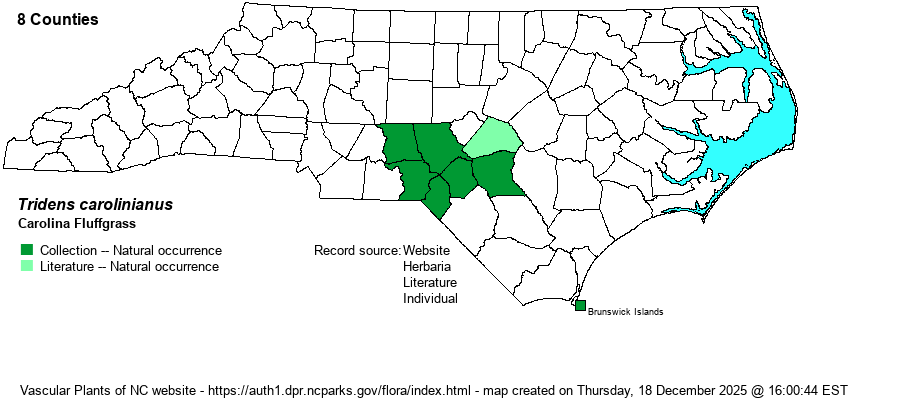| Author | (Steudel) Henrard | |
| Distribution | Almost exclusively in the Sandhills. A 1950 specimen from Brunswick County was collected from a live oak forest between Long Beach and Fort Caswell. The population in Montgomery County occurs at the southeastern edge of the Piedmont in a community with Longleaf Pine.
NC to central FL and western LA. | |
| Abundance | Uncommon in the Sandhills, but very rare to rare southeast to the coast. This is a Watch List species. Most populations number less than 20 plants, but one in Hoke County has 100+. | |
| Habitat | Mesic to dry, loamy sand soil of bean dips (slight depressions dominated by legumes) and flats within Longleaf Pine--Wiregrass uplands. |
| Phenology | Flowering and fruiting mid August-October. | |
| Identification | This grass looks at a distance like a very skinny stick. It grows from thick scaly rhizomes, the stems 2.5-5 feet tall, with relatively few, mostly basal, slender leaves. The inflorescence is 3-6 inches long and less than 1.5 inches wide, with all branches short and rather appressed to the stem. The spikelets are a pale greenish brownish color. | |
| Taxonomic Comments | None
| |
| Other Common Name(s) | Carolina Triodia | |
| State Rank | S3 | |
| Global Rank | G3G4 | |
| State Status | W1 | |
| US Status | | |
| USACE-agcp | | |
| USACE-emp | | |

